

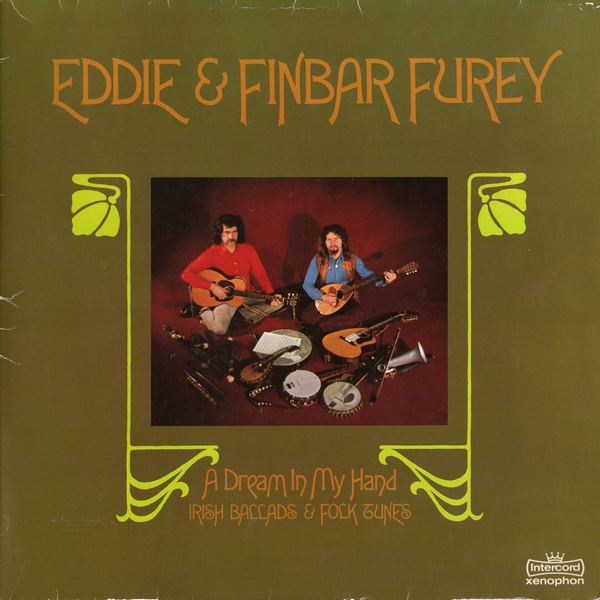 |
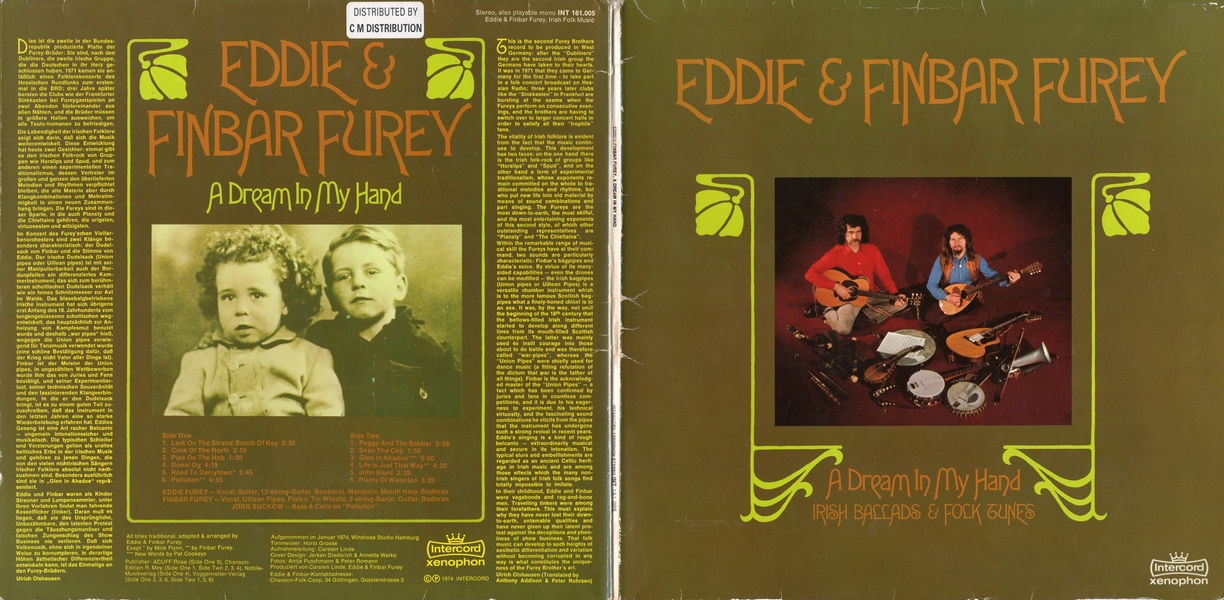
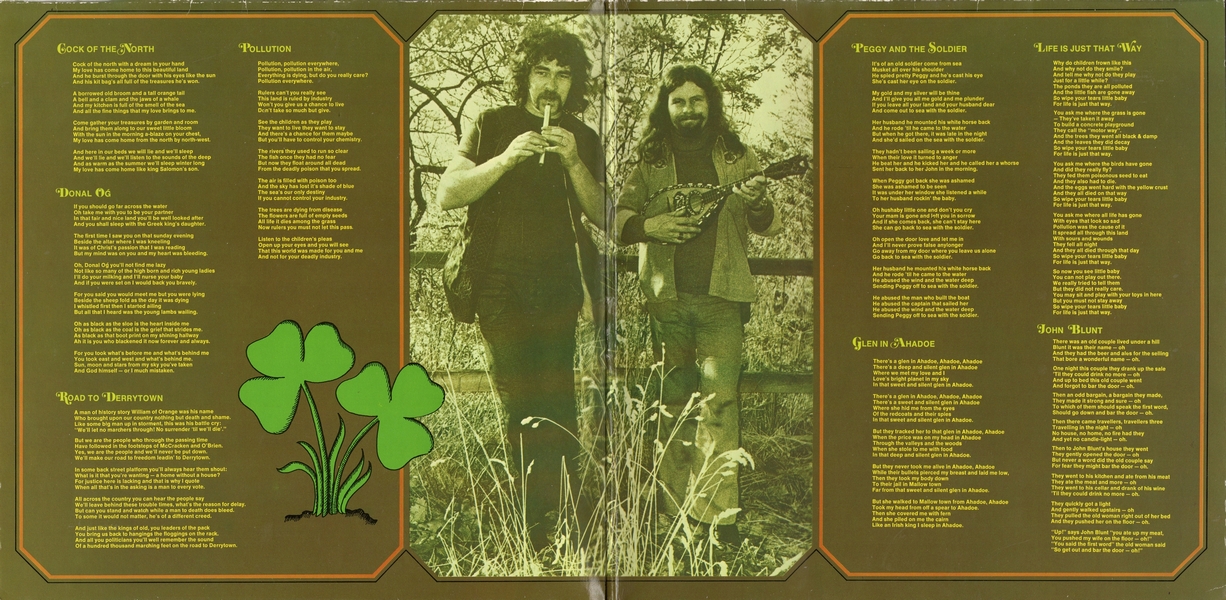
|
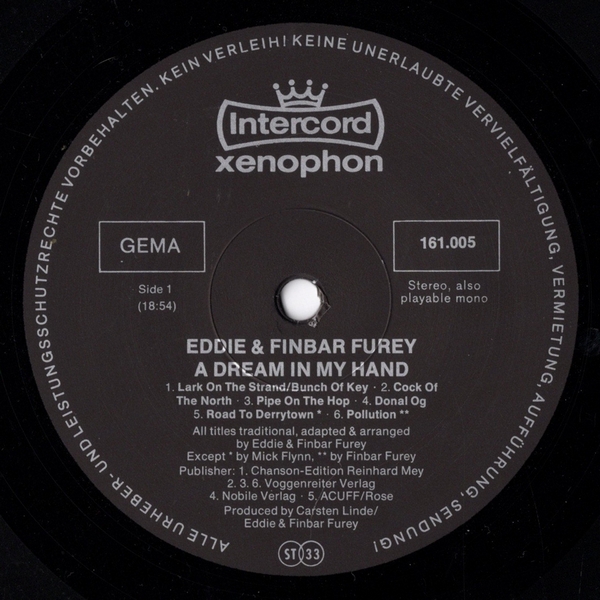
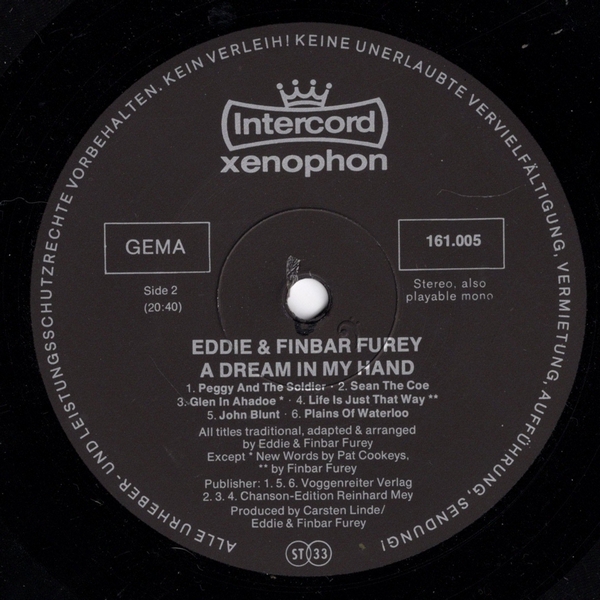
|
Sleeve Notes
This is the second Furey Brothers record to be produced in West Germany: after the "The Dubliners" they are the second Irish group the Germans have taken to their hearts.
It was in 1971 that they came to Germany for the first time — to take part in a folk concert broadcast on Hessian Radio; three years later clubs like the "Sinkkasten" in Frankfurt are bursting at the seams when the Fureys perform on consecutive evenings, and the brothers are having to switch over to larger concert hails in order to satisfy all their "Irophile" fans.
The vitality of Irish folklore is evident from the fact that the music continues to develop. This development has two faces: on the one hand there is the Irish folk-rock of groups like "Horslips" and "Spud", and on the other hand a form of experimental traditionalism, whose exponents remain committed on the whole to traditional melodies and rhythms, but who put new life into old material by means of sound combinations and part singing. The Fureys are the most down-to-earth, the most skilful, and the most entertaining exponents of this second style, of which other outstanding representatives are "Planxty" and "The Chieftains".
Within the remarkable range of musical skill the Fureys have at their command, two sounds are particularly characteristic: Finbar's bagpipes and Eddie's voice. By virtue of its many-sided capabilities — even the drones can be modified — the Irish bagpipes (Union pipes or Uillean Pipes) is a versatile chamber instrument which is to the more famous Scottish bagpipes what a finely-honed chisel is to an axe. It was, by the way, not until the beginning of the 18th century that the bellows-filted Irish instrument started to develop along different lines from its mouth-filled Scottish counterpart. The latter was mainly used to instil courage into those about to do battle and was therefore called "war-pipes", whereas the "Union Pipes" were chiefly used for dance music (a fitting refutation of the dictum that war is the father of all things). Finbar is the acknowledged master of the "Union Pipes" — a fact which has been confirmed by juries and fans in countless competitions, and it is due to his eagerness to experiment, his technical virtuosity, and the fascinating sound combinations he elicits from the pipes that the instrument has undergone such a strong revival in recent years. Eddie s singing is a kind of rough belcanto — extraordinarily musical and secure in its intonation. The typical slurs and embellishments are regarded as an ancient Celtic heritage in Irish music and are among those effects which the many non-Irish singers of Irish folk songs find totally impossible to imitate.
In their childhood, Eddie and Finbar were vagabonds and rag-and-bone men. Travelling tinkers were among their forefathers. This must explain why they have never lost their down-to-earth, untamable qualities and have never given up their latent protest against the deceptions and phoniness of show business. That folk music can develop to such heights of aesthetic differentiation and variation without becoming corrupted in any way is what constitutes the uniqueness of the Furey Brother’s art.
Ulrich Olshausen (Translated by Anthony Addison & Peter Rohrsen)